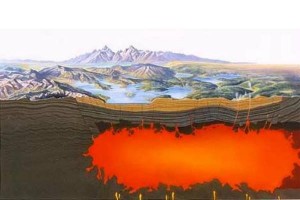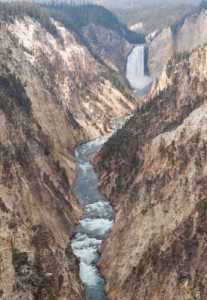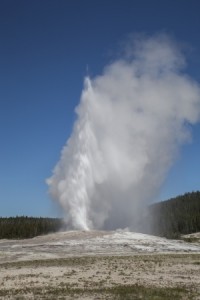
It comes as no surprise that larger amounts of magma are under Yellowstone.
The hot molten rock beneath Yellowstone National Park is 2½ times larger than previously estimated, but this comes as NO surprise.
Because we are small, humans have always seen everything else on the Earth as small. Until technology, that is. Now we are getting our proportions straight.
This planet is far bigger and much more powerful than humans will ever hope to be. Never mess with Mother Nature …
Supervolcano
There is more to our planet than meets the eye … like a supervolcano under Yellowstone that has the potential to erupt with a force about 2,000 times the size of the largest eruption at Mount St. Helens.
Something pretty darn deep has been regulating Old Faithful all these centuries, don’t you think? Now, we know “what.”
By measuring seismic waves from past earthquakes, scientists at the University of Utah have mapped the magma chamber underneath the Yellowstone caldera. The chamber is 88.5 km long (54 miles), 29 km wide (18 miles), and is 5 km to 14.5 km ( 3 miles to 9 miles) deep below the Earth’s surface.
This means there is enough volcanic material below the surface to match the largest of the supervolcano’s three eruptions over the past 2.1 million years.
This is amazing, but oh my, this is also very dangerous.
Yellowstone’s Climate Change
The largest blast ever at Yellowstone was 2,000 times the size of the 1980 eruption of Mount St. Helens in Washington State. A similar eruption would spew large amounts of volcanic material into the atmosphere, where it would circle the Earth and result in some serious climate changes. There would be a lot of destruction and a lot of deadly impacts around the globe.
The last Yellowstone eruption happened around 640,000 years ago, according to the geologic record. For years, observers tracking earthquake swarms under Yellowstone have warned that the caldera is overdue to erupt, yet we are incapable of predicting when the next eruption will be.
Advanced Warnings
There are enough instruments monitoring the seismic activity under Yellowstone that scientists will likely know well ahead of time if there is unusual activity happening or magma is rising to the surface.
Many large volcanos, like Yellowstone, are located all over the Earth. Actually, magma chambers fill most of the subsurface under the crust. We are just now awakening to this fact, but it’s better late than never to understand this, don’t you think?
”


